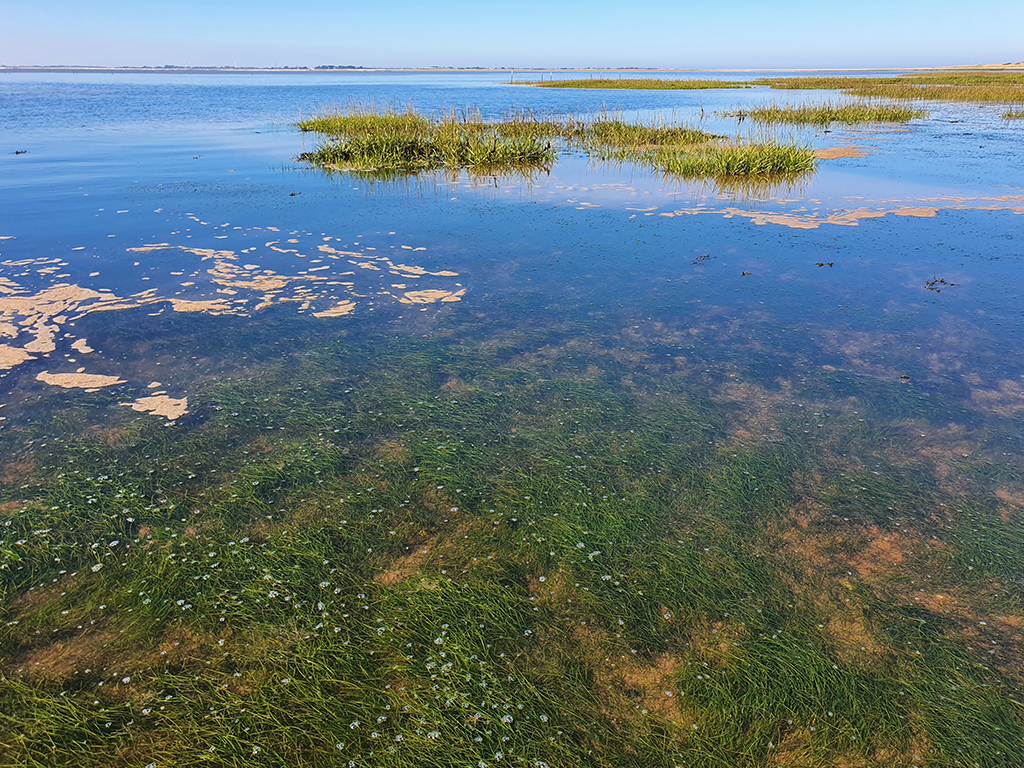Investing In Scotland's Future: Seagrass Restoration Bids And Coastal Health

Table of Contents
The Importance of Seagrass Meadows in Scotland
Seagrass meadows are often overlooked but are incredibly important components of Scotland's coastal ecosystems. These underwater meadows provide a wealth of ecological and economic benefits, making their conservation and restoration paramount. Their importance stems from their role in:
-
Supporting thriving fisheries: Seagrass meadows act as vital nurseries for numerous fish and shellfish species, including commercially important ones. This supports local fishing communities and contributes significantly to Scotland's seafood industry. Healthy seagrass directly translates to healthy fisheries.
-
Acting as highly effective carbon sinks ("blue carbon"): Seagrass is remarkably efficient at sequestering carbon dioxide from the atmosphere, playing a crucial role in mitigating climate change. This "blue carbon" storage is far more efficient than many terrestrial ecosystems, making seagrass restoration a powerful climate action strategy.
-
Protecting coastlines from erosion and storm damage: The dense root systems of seagrass meadows stabilize sediments, reducing coastal erosion and mitigating the impact of storms. This natural coastal protection is increasingly important in the face of rising sea levels and more frequent extreme weather events.
-
Supporting a rich diversity of marine life: Seagrass meadows provide habitat for a vast array of marine organisms, from small invertebrates to larger fish and mammals. This biodiversity is essential for a healthy marine environment and contributes to the overall resilience of Scotland's coastal ecosystems.
The loss of seagrass has significant negative impacts on the Scottish economy and the environment. Investing in seagrass restoration is investing in a sustainable future.
Seagrass Restoration: Methods and Challenges
Seagrass restoration is a complex process requiring careful planning and execution. Several methods are employed, each with its own advantages and disadvantages:
-
Seagrass transplantation: This involves carefully removing sections of existing seagrass meadows and transplanting them to degraded areas. While effective, it can be labor-intensive and requires careful selection of donor and recipient sites.
-
Seed collection and seeding: This method involves collecting seagrass seeds, growing them in nurseries, and then planting them in suitable locations. It's a more sustainable approach than transplantation but can be slower to show results.
-
Habitat restoration: Often, seagrass decline is linked to poor water quality or other environmental factors. Addressing these underlying issues—such as reducing nutrient pollution—is crucial for successful restoration. This may involve improving water quality through reducing agricultural runoff or addressing other pollution sources.
Significant challenges exist in seagrass restoration:
-
Funding limitations: Securing sufficient funding is often a major hurdle for large-scale restoration projects. This is where seagrass restoration bids and accessing environmental funding become crucial.
-
Finding suitable sites: Identifying locations with appropriate environmental conditions for seagrass growth is essential. Careful site selection, environmental monitoring, and assessment are critical for success.
-
Monitoring and evaluation: Ongoing monitoring is crucial to assess the success of restoration efforts and to adapt strategies as needed. Long-term monitoring provides valuable data for future projects and informs best practices.
The Seagrass Restoration Bidding Process in Scotland
Securing funding for seagrass restoration projects in Scotland often involves a competitive bidding process. Several key organizations offer funding opportunities:
-
NatureScot: Scotland's nature agency often has funding programs supporting coastal and marine conservation projects, including seagrass restoration.
-
The Scottish Government: Various government departments may offer grants or funding streams for environmental initiatives with a focus on coastal protection and biodiversity.
-
Environmental charities: Organizations like The Marine Conservation Society and others often provide grants and support for seagrass restoration projects.
A successful grant application typically requires:
-
A clear project proposal outlining project goals, methodology, and expected outcomes.
-
A detailed budget outlining project costs and funding sources.
-
A robust monitoring and evaluation plan to track progress and demonstrate impact.
Eligibility criteria and application deadlines vary depending on the funding body. It's crucial to carefully review the guidelines for each funding opportunity.
Successful Seagrass Restoration Projects in Scotland (Case Studies)
Several successful seagrass restoration projects in Scotland have demonstrated the feasibility and benefits of this approach. These case studies offer valuable lessons for future initiatives. For example, [insert example of a successful project, with a link to relevant information if available]. Analyzing these successes highlights best practices and helps refine future approaches, improving the chances of securing future seagrass restoration bids.
Conclusion
Seagrass restoration is essential for Scotland's coastal health, offering numerous ecological and economic benefits. From supporting vital fisheries and mitigating climate change to protecting coastlines and enhancing biodiversity, the return on investment in seagrass restoration is substantial. The bidding process for securing funding requires careful planning and a strong project proposal. By understanding the importance of seagrass, the restoration methods, and the funding opportunities, we can collectively work towards a healthier future for Scotland's coast.
Invest in Scotland's future! Participate in seagrass restoration efforts by applying for funding, supporting relevant organizations, or volunteering for coastal clean-up initiatives. Your actions can make a significant difference. Explore the available funding opportunities for seagrass restoration bids and contribute to the revitalization of these vital ecosystems. Let's work together to protect and restore Scotland's precious seagrass meadows.

Featured Posts
-
 Australian Poker Open Nelson Dong Wins A 390 000
May 04, 2025
Australian Poker Open Nelson Dong Wins A 390 000
May 04, 2025 -
 Bradley Coopers Daughter Lea Twins With Dad In Green At Super Bowl Lix
May 04, 2025
Bradley Coopers Daughter Lea Twins With Dad In Green At Super Bowl Lix
May 04, 2025 -
 L Etat Palestinien Netanyahu Accuse Macron De Grave Erreur
May 04, 2025
L Etat Palestinien Netanyahu Accuse Macron De Grave Erreur
May 04, 2025 -
 Nhl Stanley Cup Playoffs A Guide To First Round Matchups
May 04, 2025
Nhl Stanley Cup Playoffs A Guide To First Round Matchups
May 04, 2025 -
 Anna Kendricks Age Revealed The Surprise Thats Stunned Fans
May 04, 2025
Anna Kendricks Age Revealed The Surprise Thats Stunned Fans
May 04, 2025
Latest Posts
-
 Kentucky Derby 2025 Pace Prediction Key Horses And Their Impact
May 05, 2025
Kentucky Derby 2025 Pace Prediction Key Horses And Their Impact
May 05, 2025 -
 The 2025 Kentucky Derby Pace Scenarios And Their Implications
May 05, 2025
The 2025 Kentucky Derby Pace Scenarios And Their Implications
May 05, 2025 -
 Examining The 2025 Kentucky Derby Anticipating The Winning Pace
May 05, 2025
Examining The 2025 Kentucky Derby Anticipating The Winning Pace
May 05, 2025 -
 Kentucky Derby 2025 Factors Influencing The Race Pace
May 05, 2025
Kentucky Derby 2025 Factors Influencing The Race Pace
May 05, 2025 -
 Colonial Downs Stones Big Announcement The Virginia Derby Is Coming
May 05, 2025
Colonial Downs Stones Big Announcement The Virginia Derby Is Coming
May 05, 2025
